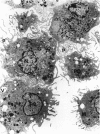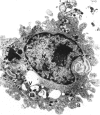Abstract
Essentially pure (97%) alveolar macrophages were isolated by bronchoalveolar lavage of rats with warm (37 degrees C) PBS solution. These cells were allowed to adhere to the inside walls of open-ended glass cylinders which were closed off at each end by three-way stopcocks. The adhering cells were perifused with RPMI-1640 medium supplemented with 5% fetal bovine serum for 18 hr at the rate of 1 mL/hr, and the effluent medium was collected automatically in 2-mL aliquots. Cell recoveries and viabilities did not differ from those found for Petri cultures treated similarly, indicating that the perifusion method under study offered an adequate milieu for short-term primary cultures. The alveolar macrophages in culture were subjected to the presence of particulate (chrysotile asbestos) and soluble (phorbol myristate) toxicants, and their response was monitored in the effluent medium by measuring the release of prostaglandins (PGE) by radioimmunoassay. A significant increase in the sequential release of PGE was observed in the presence of asbestos (100 micrograms/mL) or phorbol myristate (200 ng/mL). Treatment of the cells with indomethacin (20 microM) completely abolished the release of PGE stimulated with phorbol myristate. A cumulative response to the toxicants was also observed when cells were harvested manually from the chambers: asbestos caused a 2-fold increase in cell mortality relative to control, while phorbol myristate brought about a 3-fold increase in the number of dead cells. This effect was not prevented by the presence of indomethacin. Cell aggregation was also observed when cells were perifused in the presence of phorbol myristate, whether indomethacin was present or absent. Our results indicate that the cell perifusion system combines the advantages of conventional adherent cell cultures (viability, aggregation) with those of perifusion techniques (sequential metabolism studies).
Full text
PDF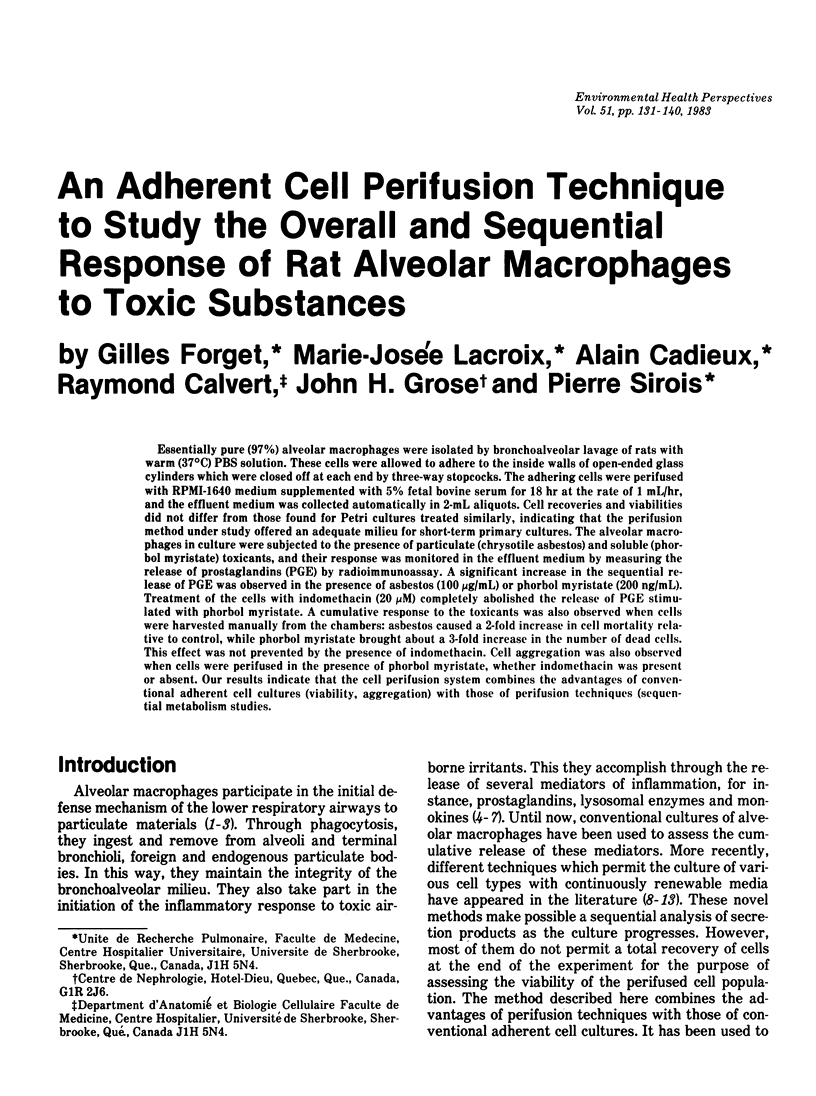


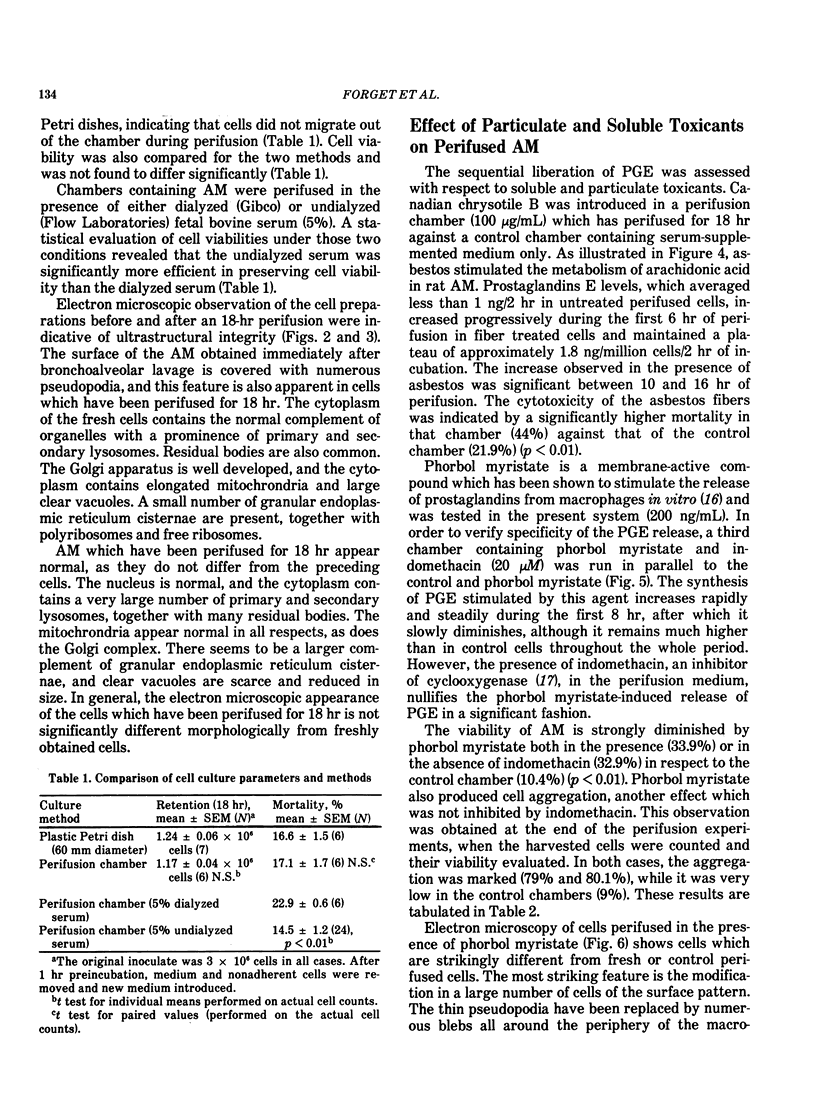

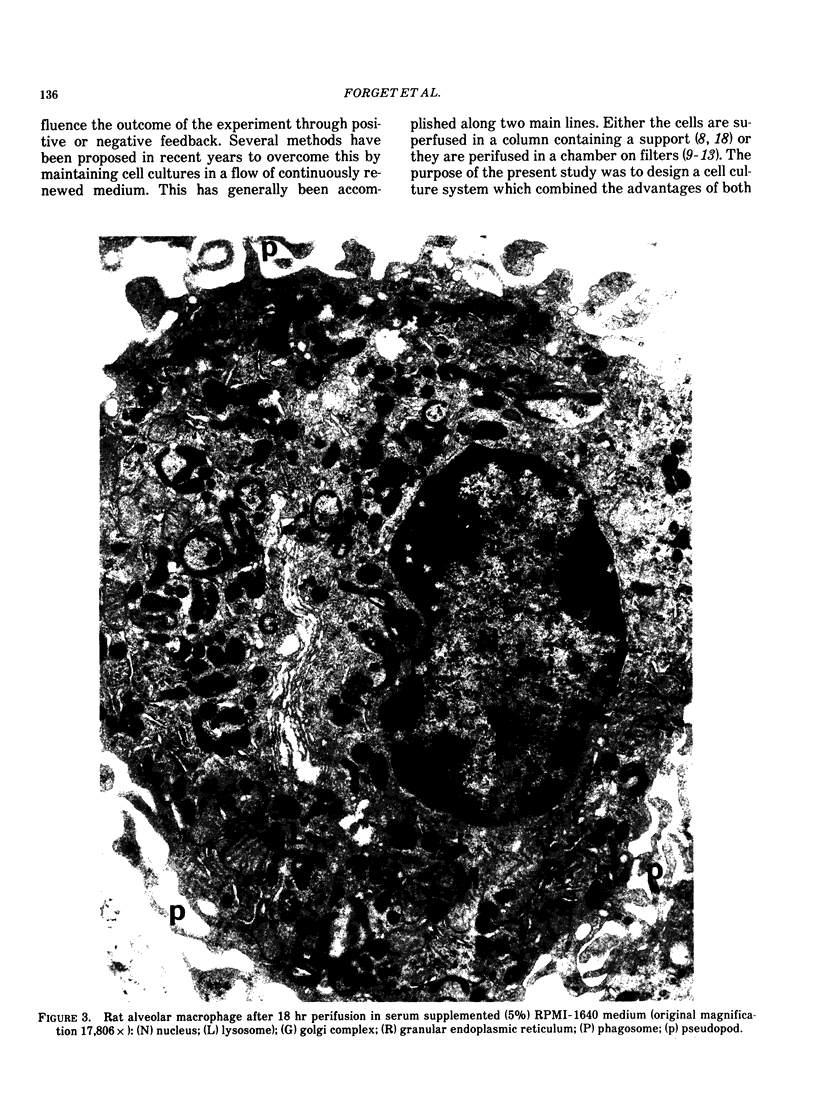



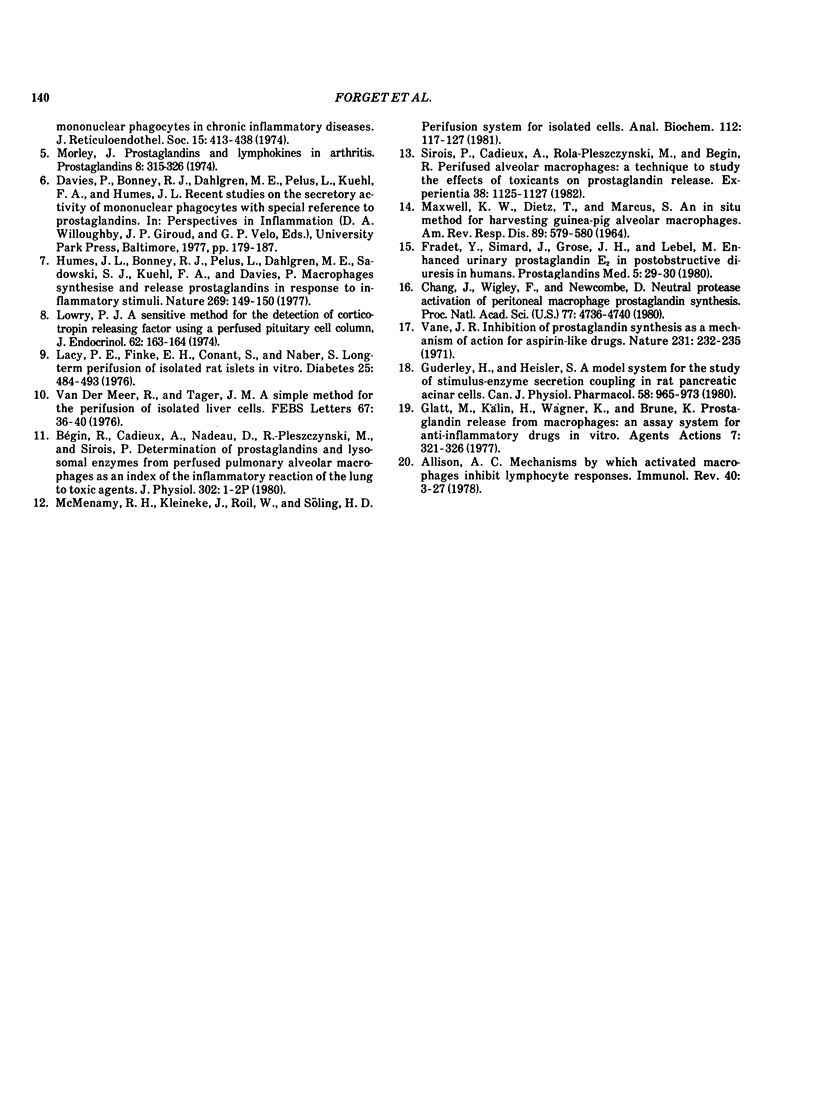
Images in this article
Selected References
These references are in PubMed. This may not be the complete list of references from this article.
- Allison A. C. Mechanisms by which activated macrophages inhibit lymphocyte responses. Immunol Rev. 1978;40:3–27. doi: 10.1111/j.1600-065x.1978.tb00399.x. [DOI] [PubMed] [Google Scholar]
- Bowden D. H. The alveolar macrophage and its role in toxicology. CRC Crit Rev Toxicol. 1973 Jun;2(1):95–124. doi: 10.1080/10408447309163832. [DOI] [PubMed] [Google Scholar]
- Brain J. D., Golde D. W., Green G. M., Massaro D. J., Valberg P. A., Ward P. A., Werb Z. Biologic potential of pulmonary macrophages. Am Rev Respir Dis. 1978 Aug;118(2):435–443. doi: 10.1164/arrd.1978.118.2.435. [DOI] [PubMed] [Google Scholar]
- Chang J., Wigley F., Newcombe D. Neutral protease activation of peritoneal macrophage prostaglandin synthesis. Proc Natl Acad Sci U S A. 1980 Aug;77(8):4736–4740. doi: 10.1073/pnas.77.8.4736. [DOI] [PMC free article] [PubMed] [Google Scholar]
- Fradet Y., Simard J., Grose J. H., Lebel M. Enhanced urinary prostaglandin E2 in postobstructive diuresis in humans. Prostaglandins Med. 1980 Jul;5(1):29–30. doi: 10.1016/0161-4630(80)90087-7. [DOI] [PubMed] [Google Scholar]
- Glatt M., Kälin H., Wagner K., Brune K. Prostaglandin release from macrophages: an assay system for anti-inflammatory drugs in vitro. Agents Actions. 1977 Sep;7(3):321–326. doi: 10.1007/BF01969563. [DOI] [PubMed] [Google Scholar]
- Guderley H., Heisler S. A model system for the study of stimulus - enzyme secretion coupling in rat pancreatic acinar cells. Can J Physiol Pharmacol. 1980 Aug;58(8):965–973. doi: 10.1139/y80-147. [DOI] [PubMed] [Google Scholar]
- Humes J. L., Bonney R. J., Pelus L., Dahlgren M. E., Sadowski S. J., Kuehl F. A., Jr, Davies P. Macrophages synthesis and release prostaglandins in response to inflammatory stimuli. Nature. 1977 Sep 8;269(5624):149–151. doi: 10.1038/269149a0. [DOI] [PubMed] [Google Scholar]
- Lacy P. E., Finke E. H., Conant S., Naber S. Long-term perfusion of isolated rats islets in vitro. Diabetes. 1976 Jun;25(6):484–493. doi: 10.2337/diab.25.6.484. [DOI] [PubMed] [Google Scholar]
- Lowry P. J. A sensitive method for the detection of corticotrophin releasing factor using a perfused pituitary cell column. J Endocrinol. 1974 Jul;62(1):163–164. doi: 10.1677/joe.0.0620163. [DOI] [PubMed] [Google Scholar]
- MAXWELL K. W., DIETZ T., MARCUS S. AN IN SITU METHOD FOR HARVESTING GUINEA PIG ALVEOLAR MACROPHAGES. Am Rev Respir Dis. 1964 Apr;89:579–580. doi: 10.1164/arrd.1964.89.4.579. [DOI] [PubMed] [Google Scholar]
- McMenamy R. H., Kleineke J., Roil W., Söling H. D. Perifusion system for isolated cells. Anal Biochem. 1981 Mar 15;112(1):117–127. doi: 10.1016/0003-2697(81)90268-2. [DOI] [PubMed] [Google Scholar]
- Morley J. Prostaglandins and lymphokines in arthritis. Prostaglandins. 1974 Nov 25;8(4):315–326. doi: 10.1016/s0090-6980(74)80096-1. [DOI] [PubMed] [Google Scholar]
- Page R. C., Davies P., Allison A. C. Participation of mononuclear phagocytes in chronic inflammatory diseases. J Reticuloendothel Soc. 1974 May;15(5):413–438. [PubMed] [Google Scholar]
- Sirois P., Cadieux A., Rola-Pleszcynski M., Bégin R. Perifused alveolar macrophages. A technique to study the effects of toxicants on prostaglandin release. Experientia. 1982 Sep 15;38(9):1125–1127. doi: 10.1007/BF01955404. [DOI] [PubMed] [Google Scholar]
- Van Der Meer R., Tager J. M. A simple method for the perfusion of isolated liver cells. FEBS Lett. 1976 Aug 1;67(1):36–40. doi: 10.1016/0014-5793(76)80865-4. [DOI] [PubMed] [Google Scholar]
- Vane J. R. Inhibition of prostaglandin synthesis as a mechanism of action for aspirin-like drugs. Nat New Biol. 1971 Jun 23;231(25):232–235. doi: 10.1038/newbio231232a0. [DOI] [PubMed] [Google Scholar]




